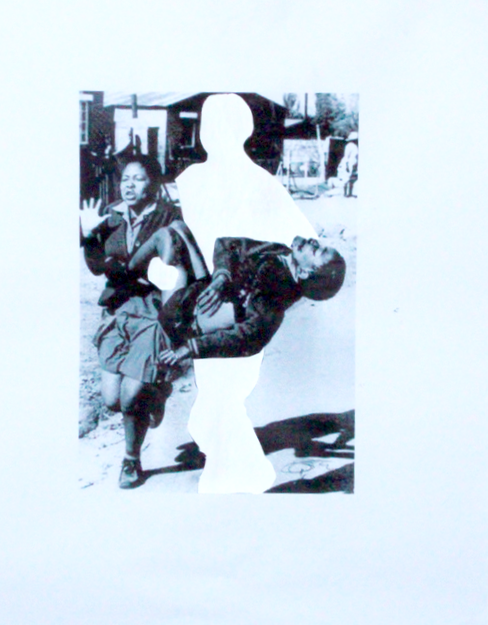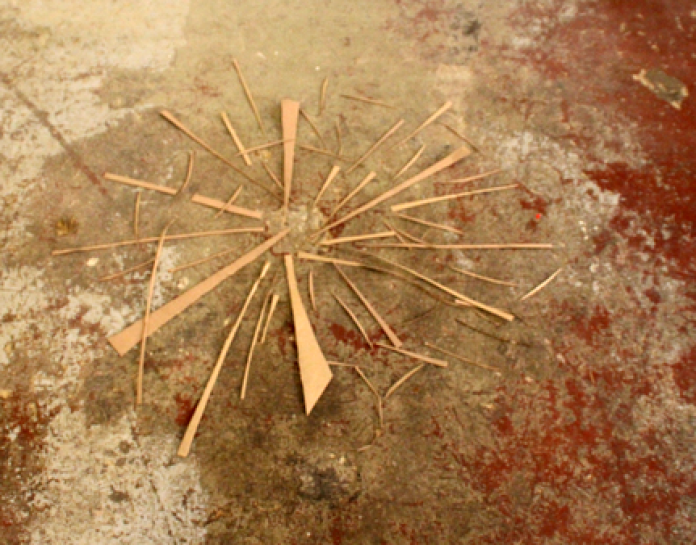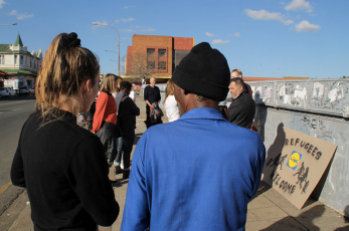I have worked with Ismar Cirkinagic since 2008. Not only did we study together at The Royal Danish Academy of Fine Arts, he and I also share the same cultural and linguistic background, since we both arrived in Denmark as refugees from Bosnia and Herzegovina in the early 90s. This connection has been one, but not the only motivation for my commitment to the curating of Ismar Cirkinagic’s first solo exhibition in his homeland, based on the series “Ocean Europe”. The other relevant conceptual and formal reasons for my involvement will be described below.
In-between-cultures reading of “Ocean Europe”
The series “Ocean Europe” was originally created in 2016 in connection with Ismar Cirkinagic‘s solo exhibition at Esbjerg Art Museum in 2016, where I was a co-curator. The exhibition has since been nominated for the AICA Art Critic Prize 2017 and chosen for MAC International in Belfast, curated by Katerina Gregos, Marta Dziewańska and Hugh Mulholland. The artwork has also been mentioned recently in Lisbeth Bonde’s publication “Danish Art in the 10’s”, (“Dansk kunst i 10’erne. 40 kunstnerportrætter”).
The series consists of 50 conceptual photographic works, based on the colours of European countries’ flags, which, through artistic processing, have become monochrome colour areas. In Photoshop, the artist has calculated the average colour of each flag, converting all recognisable colour areas and forms of the flags, as well as their socially predetermined symbolism, into monochrome void monoliths. The artworks are then produced through the traditional chemical developing process on photographic paper. We could thus say that this work technically belongs to the tradition of camera-less photography.
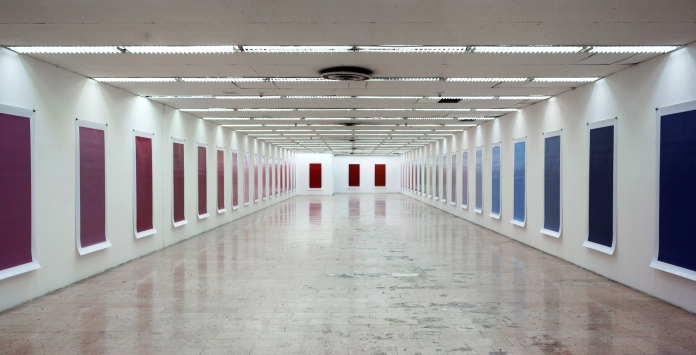

To ‘clean’ the flags is an artistic removal of the structures that underpin national feeling. This transformation is inspired by a so-called ‘oceanic feeling’ – a short and intense psychological experience, where an individual feels united with the world and where the boundaries of the ego are erased, as well as a subjective perception of the world. It is a spiritually sublime moment emerging as a product of triumphal experiences of eternity, in which all existential doubts are gone.
The work thus expands the understanding of belonging by confronting the concept of constructed national feeling (symbolically binding us to a demarcated country) with an open and universal sense of belonging (which in extreme cases occurs as an ‘oceanic feeling’ with a glimpse of the absolute).
This concept reflects the artist’s negative attitudes towards the nationalistic political tendencies within European society today.
He says: In time of crisis, when stratification of society is accompanied by decadence manifested through media and consumerism, and where xenophobia and Islamophobia are not marginal phenomena, but political mainstream, the flags are nothing more than primitive objects for accumulation of national patriotic feelings and as such used by the elite for cultivation of narrow-minded and primitive points of view on a far wider and more complex world condition that surrounds us. This process of “spiritual purification” which extends in the existing political constellations, carries in its own way a seed of anarchist thought.
Questioning the nation-state concept opens up new significant topics, such as the notion of borders, ethnicity, and religion; all of which have a direct relationship with the Balkan civil war in the 90s. Therefore, it seems both meaningful and important to present this exhibition in Sarajevo to an audience whose lives have been so influenced by mechanisms governed by exactly these nationalist polarisations: a country that, unfortunately, still has no functional governmental system. The Dayton Peace Agreement, which was introduced as a solution to stop the war, has now become a permanent state of stagnation, where the two entities (Federation of Bosnia-Herzegovina and Republika Srpska) present incompatible visions and missions for the country. The ‘ethnocratic model’ imposed on Bosnia and Herzegovina by the Dayton Peace Agreement not only makes socio-political development more difficult, but ironically actually prevents the process of democratic consolidation.
As Sead Alihodzic from International IDEA (The International Institute for Democracy and Electoral Assistance) explains: The priority of “ethnic principles” over “democratic principles” is not sustainable over a long time-period. It inevitably leads to renewed conflicts because it favours ethnic parties, which generate tensions and keep them high in order to remain relevant….The “ethnic principle” that takes the priority in the internal organization and functioning of the state drains the time and energy of democratic institutions while delivering little to people of Bosnia and Herzegovina. “Ethnocracy”, as the Bosnian system is sometimes described to , may be the settlement to end the war, but its positive effects were short living as it soon started to feed conflicts on which ethnic parties rely in their struggle for power.
Both historically and today, the complexity of Balkan identity is based on the intersection of different ethnicities, nationalities, and religions. In my view, in the future this might become an enriching angle that can give European identity a new dimension. Moreover, Bosnia and Herzegovina‘s current peripheral positioning in relation to the EU is another interesting factor which provides a basis for a significantly different reception of “Ocean Europe” in Sarajevo, compared to the one Cirkinagic received at Esbjerg Art Museum in Denmark.
Comparing the reaction of the audience in the two countries where Ismar Cirkinagic lives is of significance, since the artist’s practice often deals with the cultural and ideological translations created from his being between two cultures.
Poetic Anarchism
During the first couple of exhibitions, the concept of Ocean Europe started to expand and new references to anarchist thinking were drawn. The pivotal point for comparison with anarchism, was the artist’s elimination of national symbols from the flags, which apart from being an aesthetic gesture also alludes to a poetic critique of the notion of state. Ismar Cirkinagic’s poetic and nihilistic artistic act does not only introduce us to anti-authoritarian waters but makes us question the legitimacy of the sociopolitical structures represented by the flags – the state itself. In its subtle aesthetic way, this artwork opens a space for the discussion of the role of anarchism in modern society.
Anarchism can, in short, be described as a social doctrine based on the renouncement of the state mechanism by removing the notion of property and authority. Anarchism is also a philosophy of humanity, focusing on the preservation and development of the human being by defending complete freedom (physical, mental, religious, political, economic, etc.) These three concepts: of property, authority and freedom, can play a role in understanding Ismar Cirkinagic’s conceptual approach to “Ocean Europe”. I believe that some fragments from “The Anarchist Doctrine Accessible to All,” written in 1925 by José Oiticica, can highlight this connection:
It makes sense to start by looking at José Oiticica’s critique of private property, which is most of the time connected to land, and thus to a concrete geographical territory, belonging to a particular country and represented by a specific flag:This right to the monopoly of land obtained through purchase, heritage, donation, war, etc., seems natural and just to us, because we have been used to it for thousands of years, however, we can easily evaluate the monstrosity that this entails with three simple considerations: a) The sun, the air, the rain, and the sea are natural gifts and nobody has the right to appropriate them to exploit another person. Natural gifts are and must be free, and should not be bought or paid for with work…So, what we find so monstrous about the air, the light, the sea, and the rain does not repulse us in the same way when it comes to land. Land is also a natural gift and nobody should appropriate or dismember it in order to exploit the work of another. b) This injustice becomes extremely potent if we observe, for example, the legal institution of inheritance. An individual is born. If the father is the owner of large land extensions, the child becomes heir just because the father is a proprietor. Without any personal effort or work, without participating with any physical or intellectual contingent, the heir becomes the owner of these lands, with the ability to sell, rent, or leave them uncultivated. While the rest of people in need do not have the right to cultivate these lands without the heir’s consent. c) This fundamental injustice is so severe that it has convert¬ed the economic regime in a paradox, namely, the less you work the more you have or the more you work the less you have. In fact, the proprietor of the farm, factory, or commercial establishment, deals with the lightest of services – that is, when they actually occupy themselves with something – and obtains the bigger profits; while slaves, employees, cashiers, workers, all of those who work the hardest and the longest hours receive, in the form of a salary, a small amount of the wealth produced.
Such a capitalistic socio-political system based on property requires, of course, control and regulations, which raises the question of authority. José Oiticica says:.. José Oiticica says:.. authority has a double purpose: a – to defend proprietors against non-proprietors, b – to regulate competition amongst proprietors. Nevertheless, in a society without private property there are no proprietors, there are no owners, so there is no need for a department to defend proprietors. The double purpose of authority disappears, so authority and State also vanish. Once property disappears the economic aspect obviously also of State disappears.
A natural counterpoint to the concept of authority is that of freedom, which anarchist doctrine explains in the following way.
Freedom allows people a possibility for wakening and developing all their abilities and capacities without fear, restriction or frustration. This open society cultivates freedom as a right to defend freedom itself, just like health and the oxygen we breathe. That is why Anarchy and Order are not enemies. To the contrary, the Anarchists’ intention is to develop and improve these, using responsible freedom and human solidarity as a propelling motor! It is not true that people have to suffer from the authority of the government to perform their duties and to know how to deal with their freedom. According to political sophism, “your freedom ends where the other’s begin”, as if all human’s needs could be measured or weighted.” Anarchism understands freedom as a public heritage, that is as necessary to human development as light, or as the air we breathe. That is why there must be perfect social equality in the anarchic commune. Anarchists claim that all people are unequal. We can also reasonably say that there are no two equal brains; no two equal personalities, wishes, ideas, tendencies, intelligences, or equal abilities. Here it is referred to equality of social conditions for a free development of natural inequalities. Freedom requires mutual agreement, and agreement means limitation of will, a moral commitment to precisely meet all terms of the agreement. Freedom is the possibility to fulfill an agreement amongst all. Once an individual breaks the agreement, this person impedes others from meeting it as well, by suppressing the possibility of fulfillment. This is called oppression. “When joining a commune, all individuals accept an express or tacit agreement; they all commit to meet the agreement, but nobody forces them into it in case they do not want it anymore. Since the agreement is for their own benefit, the more perfect the freedom, that is, the harmony in meeting the agreement, the greater the benefit will be and rarer, maybe even impossible, shall be the ruptures.
Seeing “Ocean Europe” through the lens of anarchist thought threw, for me, a new light on this conceptual artwork. Suddenly Cirkinagic’s monochromes became amorphous and leaderless flags of humanity, symbolising openness and freedom. His artistic vision of belonging, based more on universal human values than on constructed nationalist ideologies, is now connected to a scepticism towards the nation-state structure, (probably provoked by the artist’s own experience of the loss of a home country and the deconstruction of Yugoslavia). Within the concept, I now see a interesting new connection between humanity and nature, where the human connection with Earth, as the source of general natural good, is contrasted with territorial thinking, which provokes wars and fights over property. The artwork grew, in my eyes, from being a conceptual socio-political artwork to also become an artwork dealing with the human condition, where the artist’s motivation shines through as a desideratum of openness (borderless-ness), and thus freedom.
Collegium Artisticum – Sarajevo as a platform
The exhibition venue for “Ocean Europe” in Sarajevo is called Collegium Artisticum Sarajevo. Historically, the venue has been very important for the Yugoslav art scene and it still functions as one of the significant places for contemporary art in Bosnia and Herzegovina.
It was founded as a gallery in 1975 and named after the avant-garde artist group Collegium Artisticum, which was active in Sarajevo from 1939 to 1941 – a progressive artistic movement consisting of young intellectuals who had returned to the city from universities in other European countries. Its mission was to warn about fascism by promoting the notion of multiculturalism through exhibitions, concerts and theatre performances. The members were very dedicated and put their lives at stake for the mission.
As Dr. Mirjam Rajner explains: Faced at home with an atmosphere of despair caused by poverty and political stagnation and acutely aware of the dangers that the spread of Fascism and Nazism meant for the liberal-minded Europeans, they, soon joined by the local Jewish and non-Jewish leftist artists, opted for an avant-garde inspired action. Hoping to bring to Sarajevo some of the live, avant-garde and artistic atmosphere characteristic of Prague of the 1930s, filled with leftist émigré artists and writers, they formed a “synthetic theater” named Collegium Artisticum. It was inspired by Dorival 38, a similar Prague avant-garde theater founded and directed by the Czech poet, journalist, musician and actor, Emil František Burian (himself influenced by the post-revolutionary work of the famous Russian theater directors, Vsevolod Meyerkhold and Alexander Tairov). Sarajevo’s group that continued its activities until the early 1941 and the very outbreak of the WWII in Yugoslavia, united music, pantomime, architecture, painting, film, drama and poetry. In addition, the members organized exhibitions and held public lectures, all of which were meant to raise the awareness of the upcoming danger and offer solutions steeped in anti-Fascism, leftism and communism.
In conjunction with the curating of “Ocean Europe” in Sarajevo, I find the history of the exhibition venue highly relevant, because it confirms the artistic need to think beyond constructed nationalist structures. It is also interesting that the initiative for such a movement was taken by artists who have been abroad and returned to Sarajevo with new perspectives and a multicultural view of the world: a diasporic position that also characterises Ismar Cirkinagic.
Finally, it should be mentioned that the exhibition fits very well with Collegium Artisticum’s architecture, with its more than 50 m long unbroken wall space. As mentioned earlier, the artworks were originally produced for the Esbjerg Art Museum, but it is only during the display at Collegium Artisticum’s open space, without divisions, that all 50 works from the series will be visible at once – of great importance to the exhibition, which, by the nature of its monochrome monolith-like works, is based on both a visual and a physical total experience.

Ismar Cirkinagic, 1973
Ismar Cirkinagic (BiH/DK) has lived in Denmark since 1992 and graduated from the Royal Danish Academy of Fine Arts in Copenhagen in 2006.
He has exhibited in art institutions and museums such as the Metropolitan Arts Centre, Belfast, the HEART Contemporary Art Museum and the Kunsthal, Charlottenborg. He also participated in ARoS Trienneale, Liverpool Biennal “City States”, and Socle Du Monde Biennal. His works are part of collections in the ARoS Museum and in the National Museum of Photography in Denmark.
Installation views from previous exhibitions of Ocean Europe, respectively in Esbjerg Art Museum in Denmark and MAC International in Belfast, Northern Ireland.



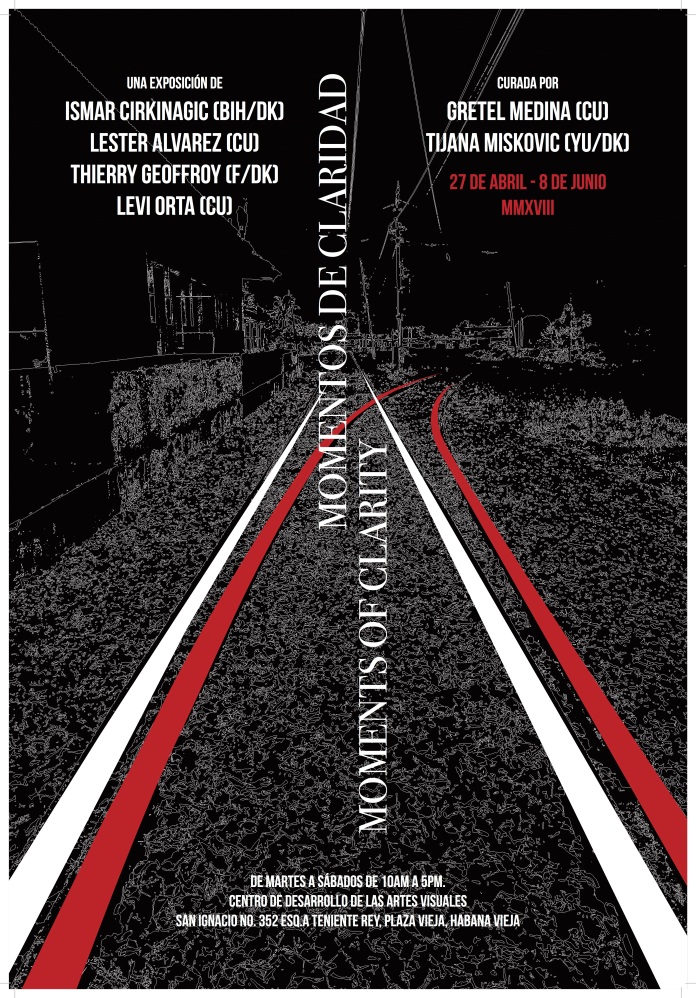
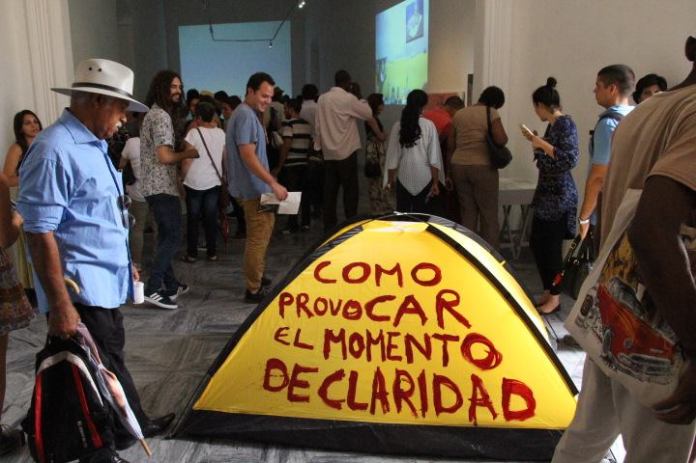

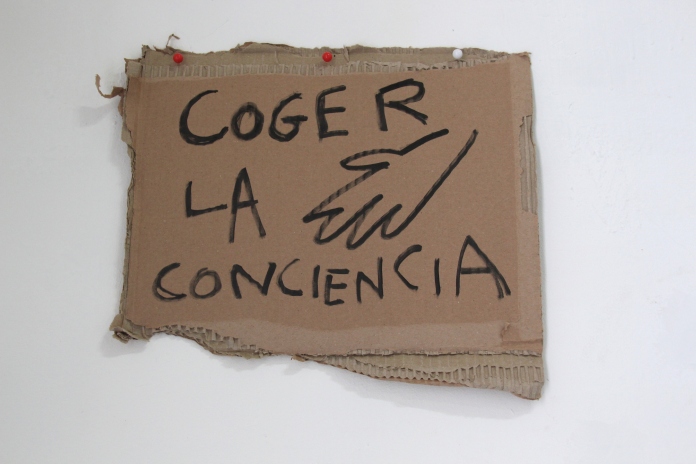
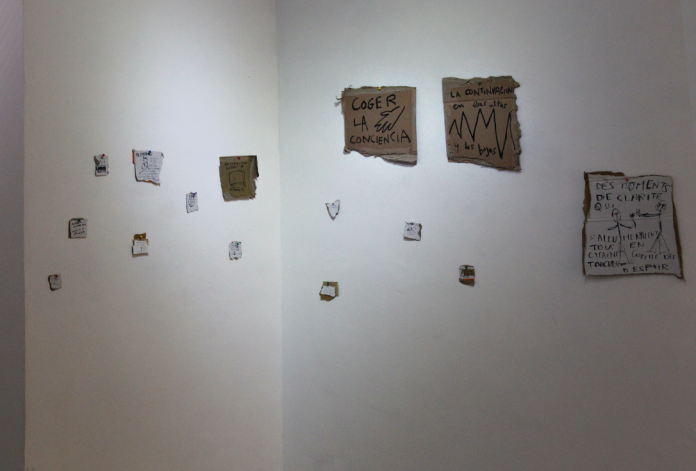

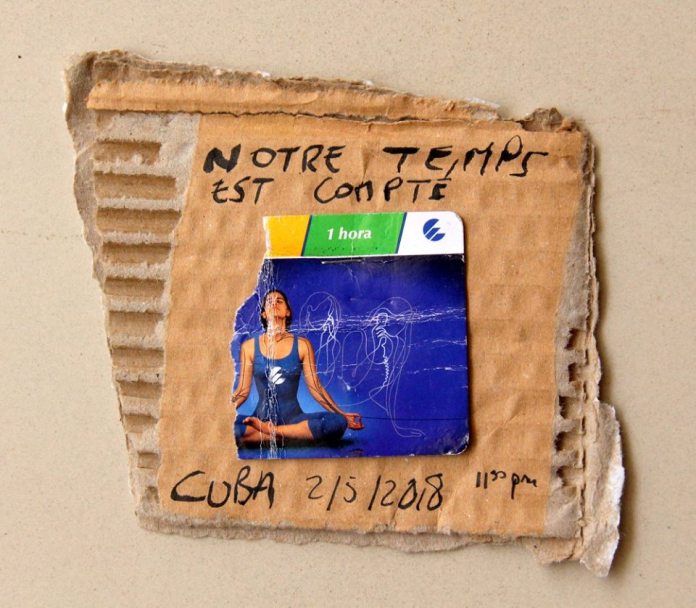
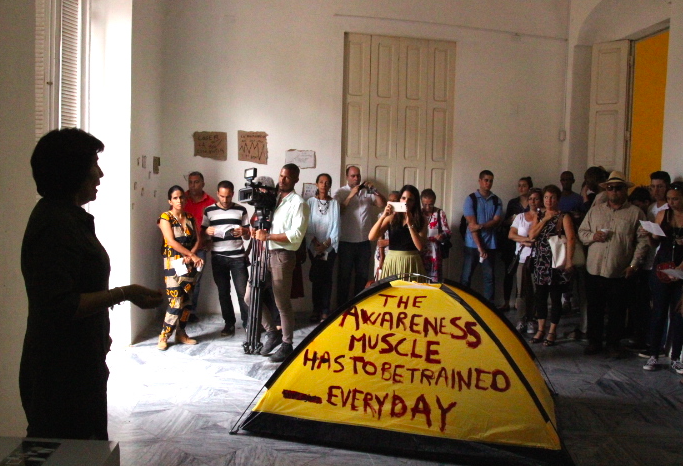

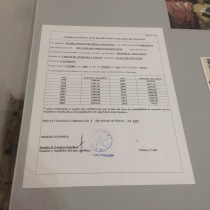





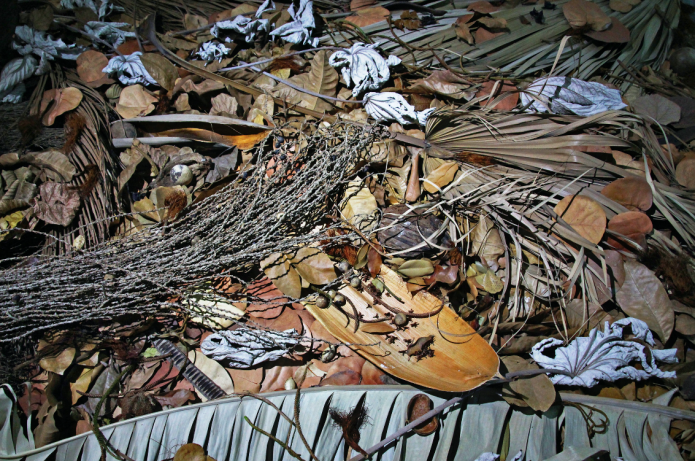
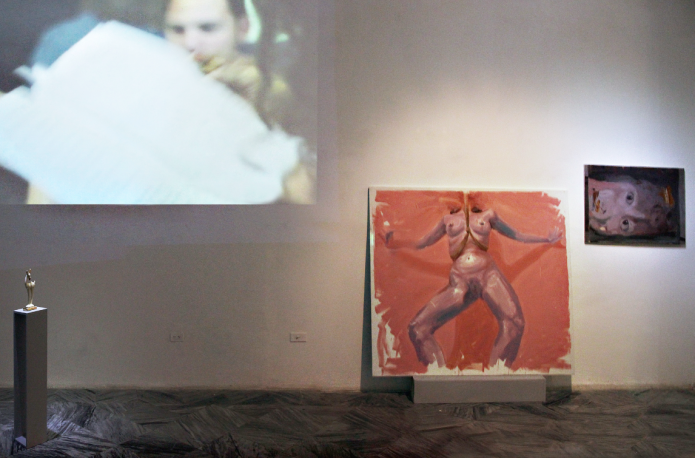




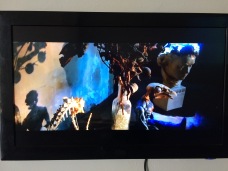


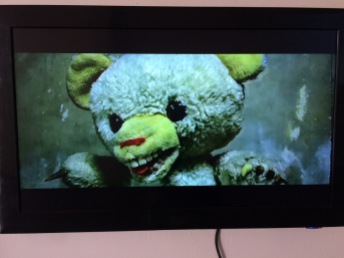




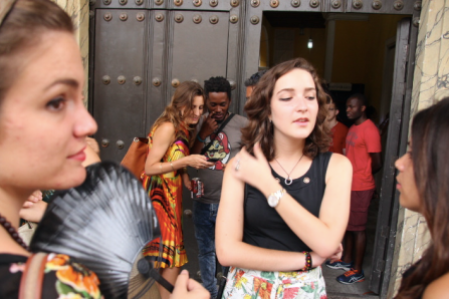

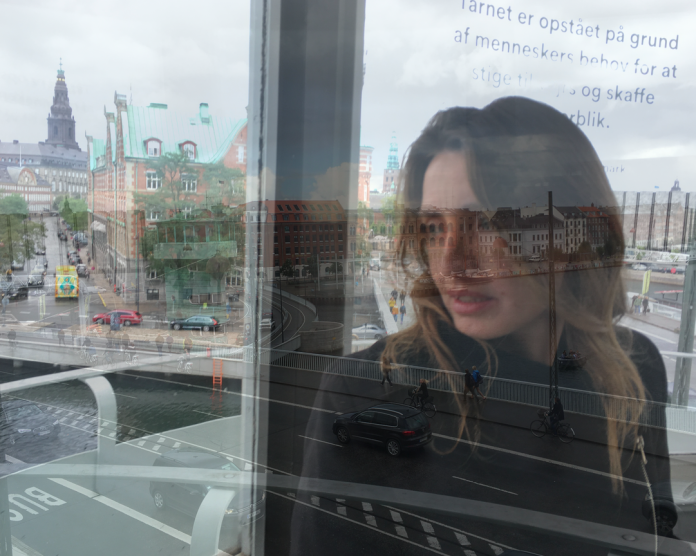


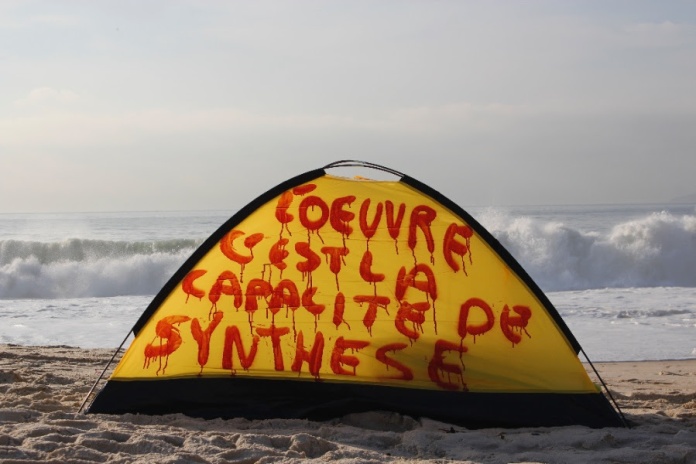

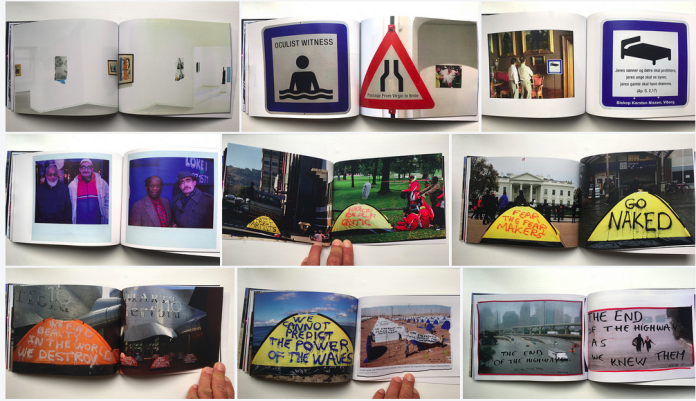





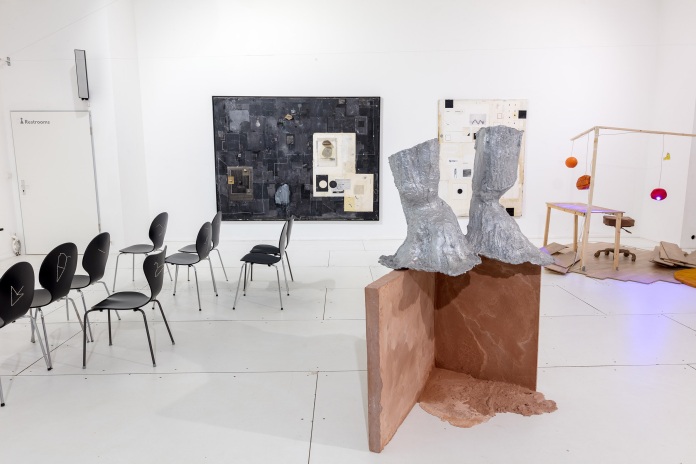
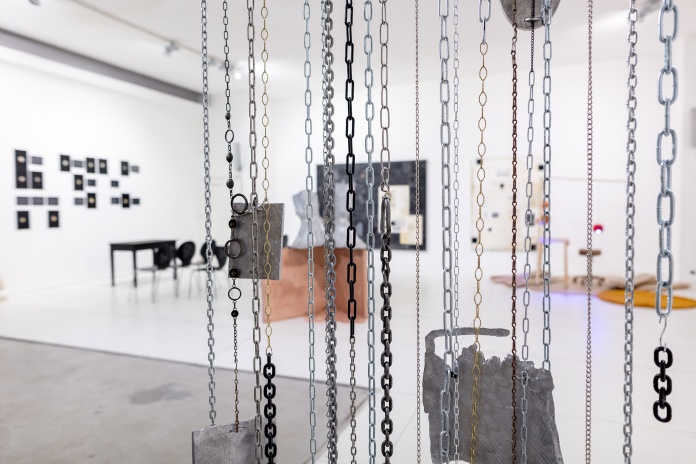
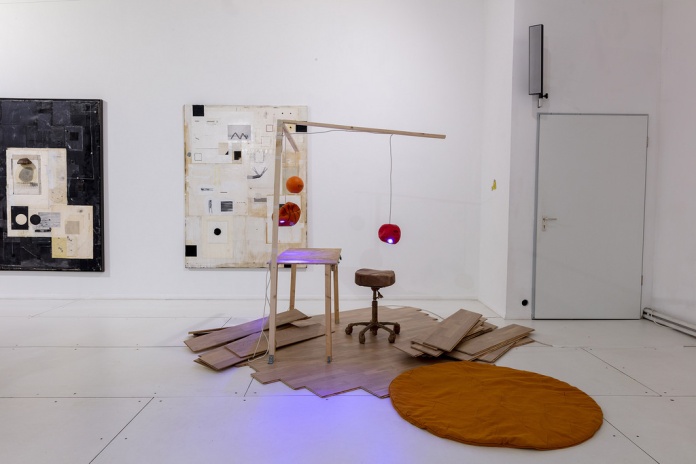






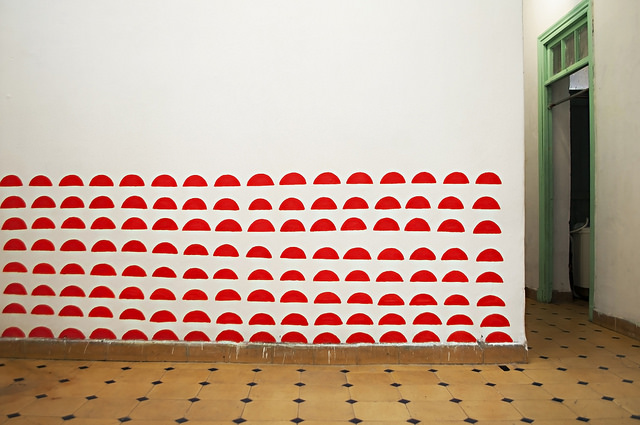
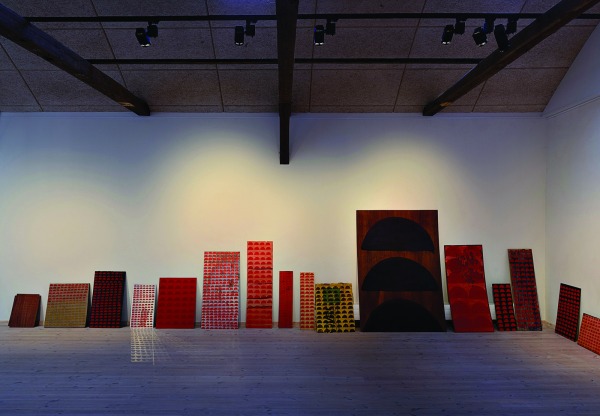
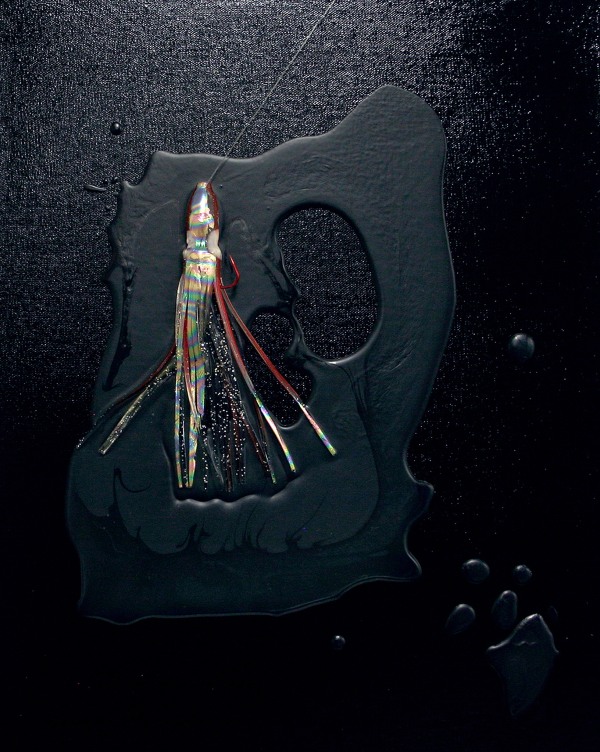
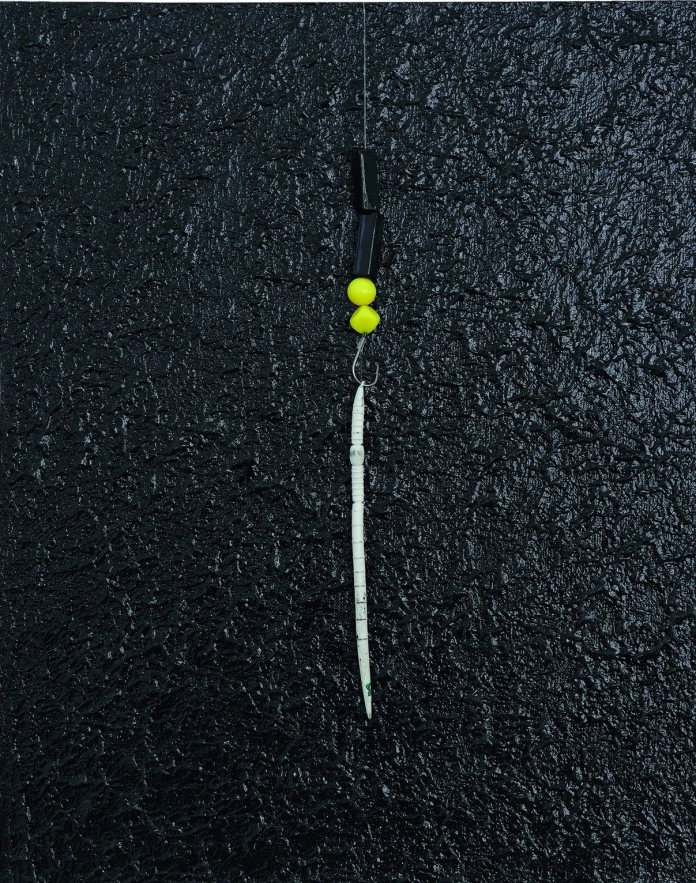



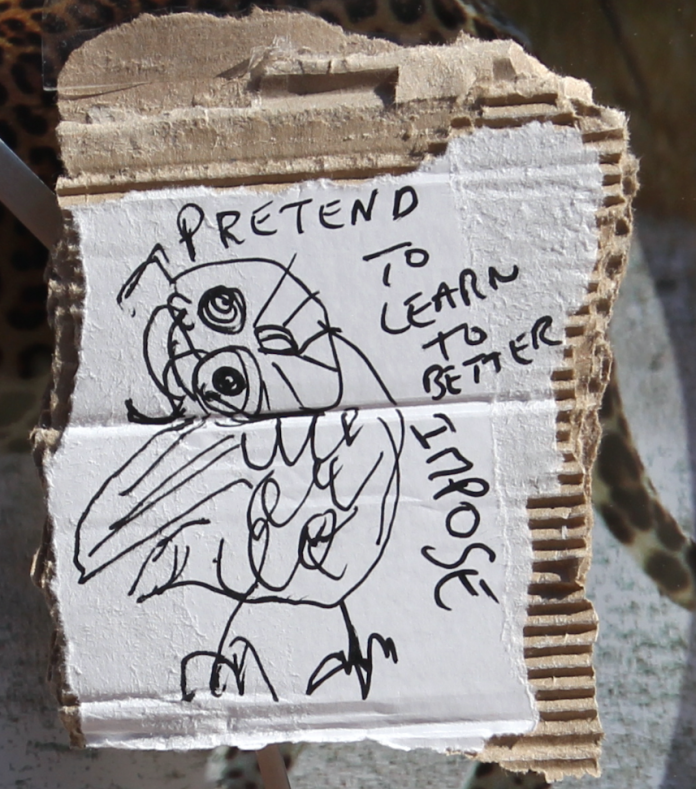
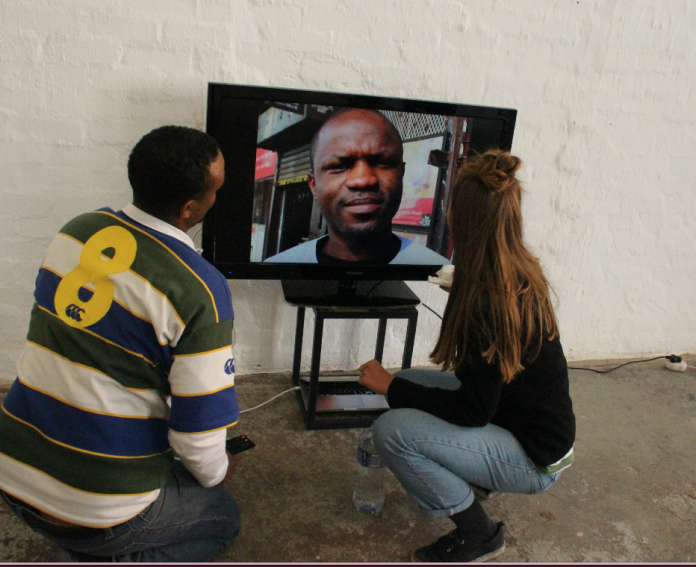 “We meet each other yesterday at the debate in the museum” said Clint O Ferreira, a South African artist.
“We meet each other yesterday at the debate in the museum” said Clint O Ferreira, a South African artist.

